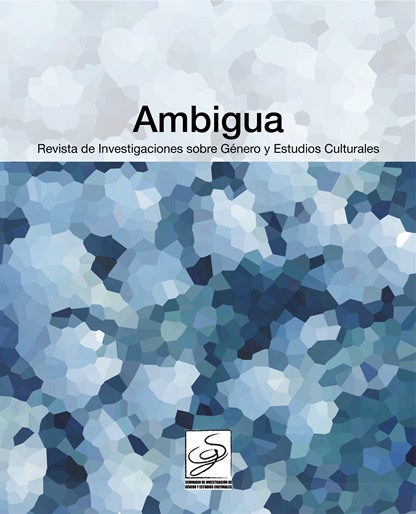El erotismo prohibido: un mecanismo estructurado y estructurante de relaciones de poder.
Abstract
Abstract:
This document systematizes the main premises of a research project based on the forbidden eroticism, as a structured and structuring mechanism of power-based relationships that take place in patriarchal societies. The individual and collective practices of this power-based relationships are manifested in three dimensions: Decision making process, concrete relational environment, and the sense of praxis production. Reflections on this project are based on the hermeneutic and historic method which are applied to the main theories on power in two cinematographic productions that involve this topic, and the critical analysis of alternative thinking, experiencing, and comprehending sexuality that are socially judged of being “devious sexual practices”. Forbidden eroticism is built on a power mechanism, as a hinge dispositif, which allows us to understand sexuality from a political perspective weaving the existing relationships between state, family, public spaces and individual subjectivity which condition legally and morally people’s experiences of pleasure, enjoyment, and jouissance that re-produce discursive resistance practices, legitimizing or repressing the non-material dimension of their own sexuality. From this point of view the article attempts to expose how forbidden eroticism brings out the sexuality canon on which alternative forms are categorized as pathologies that threaten society’s control over people and its conception of normality based on a hetero-normal discipline that as a technology of the self, centers the function of sexuality as merely reproductive and linked to the family as the core of every society.
Keywords: forbidden eroticism; power mechanism; hetero-normative discipline; censored sexuality; code standardization; enjoyment - jouissance - pleasure.
Resumen:
El presente artículo sistematiza las tesis centrales de un ejercicio de investigación adelantado en torno al erotismo prohibido, en tanto mecanismo estructurado y estructurante de las relaciones de poder en las sociedades patriarcales, cuyo ejercicio por parte de actores individuales y colectivos se manifiesta en tres dimensiones, que son el proceso decisional, el ámbito relacional concreto y la producción del sentido de la praxis. La reflexión se realiza a partir del método histórico-hermenéutico aplicado a las principales teorías del poder, a dos producciones cinematográficas ineludibles en este campo y al análisis crítico de formas alternativas de pensar, experimentar y comprehender la sexualidad, socialmente valoradas como «prácticas sexuales desviadas». El erotismo prohibido se constituye así en un mecanismo de poder que, a la manera de un dispositivo bisagra, permite comprender la sexualidad desde una perspectiva política, entretejiendo las relaciones existentes entre el Estado, la familia, el espacio de lo público y la subjetividad individual, que bajo la forma del control social, ya sea con la vía jurídica o de la sanción moral, condicionan la experiencia del goce, el placer y el disfrute de sujetos sexuados re-creadores de prácticas discursivas de resistencia, legitimación o represión de la dimensión in-material de su sexualidad. Desde esta perspectiva, a lo largo del artículo se explicará cómo el erotismo prohibido hace posible visibilizar el canon de la sexualidad con base en el cual se catalogan formas alternativas como patologías amenazadoras del control social del sujeto individual y colectivo y de la normalidad alcanzada a través de una disciplina heteronormativa que, en tanto tecnología del yo, centra la sexualidad en la función reproductiva ligada a la familia como núcleo de la sociedad.
Palabras clave: erotismo prohibido; mecanismo de poder; disciplina heteronormativa; sexualidad censurada; código de normalización; disfrute – goce – placer.
Downloads
Downloads
Published
How to Cite
Issue
Section
License
Copyright (c) 2014 Ambigua: Revista de Investigaciones sobre Género y Estudios Culturales

This work is licensed under a Creative Commons Attribution-NonCommercial-ShareAlike 4.0 International License.
The authors agree with the following:
1. Authors retain copyright and grant the journal right of first publication with the work simultaneously licensed under a license Attribution-NonCommercial-ShareAlike 4.0 International (CC BY-NC-SA 4.0) that allows others to share the work with an acknowledgement of the work's authorship and initial publication in this journal.
2. Authors are able to enter into separate, additional contractual arrangements for the non-exclusive distribution of the journal's published version of the work (e.g., post it to an institutional repository or publish it in a book), with an acknowledgement of its initial publication in this journal.
3. Authors are permitted and encouraged to post their work online (e.g., in institutional repositories or on their website) prior to and during the submission process, as it can lead to productive exchanges, as well as earlier and greater citation of published work (See The Effect of Open Access).









